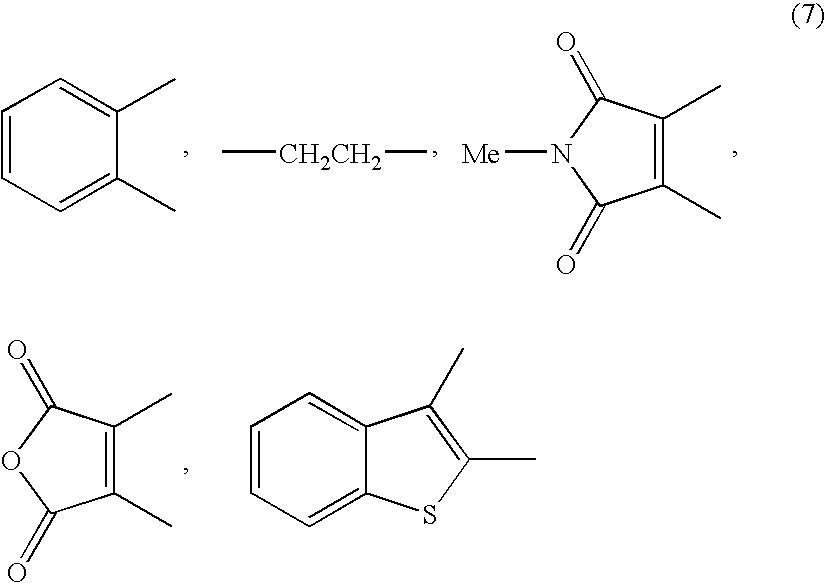Method for producing L-2-amino-4-(hydroxymethylphosphinyl)-butanoic acid
a technology of hydroxymethylphosphinyl and butanoic acid, which is applied in the preparation of amino-carboxyl compounds, organic chemistry, group 5/15 element organic compounds, etc., can solve the problems of large quantity of expensive optically active amino acids such as d-valine, requiring a large amount of equimolar or more expensive optically active amino acids to be used, and achieving high enantiomeric excess , the effect of efficient production
- Summary
- Abstract
- Description
- Claims
- Application Information
AI Technical Summary
Benefits of technology
Problems solved by technology
Method used
Image
Examples
example 1
Production of L-2-amino-4-(hydroxymethylphosphinyl)-butanoic acid
[0086]300 mg of 2-acetamino-4-(hydroxymethylphosphinyl)-butenoic acid, 9.0 mg of [Rh((S,S)-Me-DUPHOS™)(cod)]OTf, and 10 ml of methanol were put in a stainless autoclave under argon atmosphere, and then stirred at room temperature for 22 hours under a hydrogen pressure of 0.3 MPa. After the conclusion of the reaction, the solvent was concentrated under reduced pressure, and to the residue thus obtained was added 10 ml of 6N hydrochloric acid, and the mixture thus obtained was refluxed for 12 hours. The solvent was distilled away under reduced pressure, and 4 ml of propyleneoxide was added, and the mixture thus obtained was stirred for 1 hour. After the concentration under reduced pressure, the residue thus obtained was purified with ion-exchange resin (Dowex® 1×4 Ac, 200-400 mesh: eluent 10% acetic acid aqueous solution) to obtain 211 mg of objective L-2-amino-4-(hydroxymethylphosphinyl)-butanoic acid as a solid. HPLC a...
example 2
Production of L-2-amino-4-(hydroxymethylphosphinyl)-butanoic acid
[0089]When the reaction was carried out in the same manner as in Example 1 except that 10 ml of n-butanol was used as a solvent instead of 10 ml of methanol in Example 1, 215 mg of objective L-2-amino-4-(hydroxymethylphosphinyl)-butanoic acid was obtained. HPLC analysis indicated that the enantiomeric excess of this product was 92.7% ee.
example 3
Production of L-2-amino-4-(hydroxymethylphosphinyl)-butanoic acid
[0090]When the reaction was carried out in the same manner as in Example 1 except that 9.8 mg of [Rh((S,S)-Et-DUPHOS™)(cod)]OTf was used as a catalyst instead of 9.0 mg of [Rh((S,S)-Me-DUPHOS™)(cod)]OTf in Example 1 and 10 ml of n-butanol was used as a solvent instead of 10 ml of methanol, 180 mg of objective L-2-amino-4-(hydroxymethylphosphinyl)-butanoic acid was obtained. HPLC analysis indicated that the enantiomeric excess of this product was 95.6% ee.
PUM
| Property | Measurement | Unit |
|---|---|---|
| enantiomeric excess | aaaaa | aaaaa |
| temperature | aaaaa | aaaaa |
| temperature | aaaaa | aaaaa |
Abstract
Description
Claims
Application Information
 Login to View More
Login to View More - R&D
- Intellectual Property
- Life Sciences
- Materials
- Tech Scout
- Unparalleled Data Quality
- Higher Quality Content
- 60% Fewer Hallucinations
Browse by: Latest US Patents, China's latest patents, Technical Efficacy Thesaurus, Application Domain, Technology Topic, Popular Technical Reports.
© 2025 PatSnap. All rights reserved.Legal|Privacy policy|Modern Slavery Act Transparency Statement|Sitemap|About US| Contact US: help@patsnap.com



